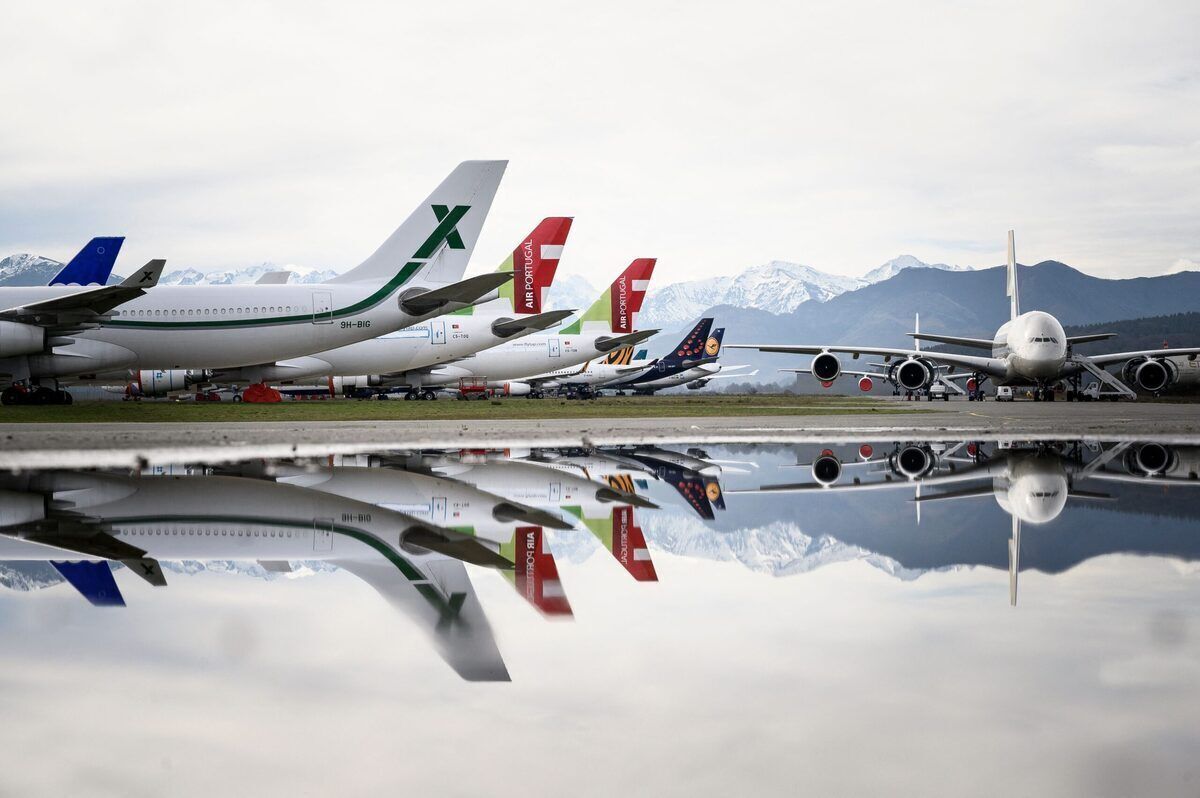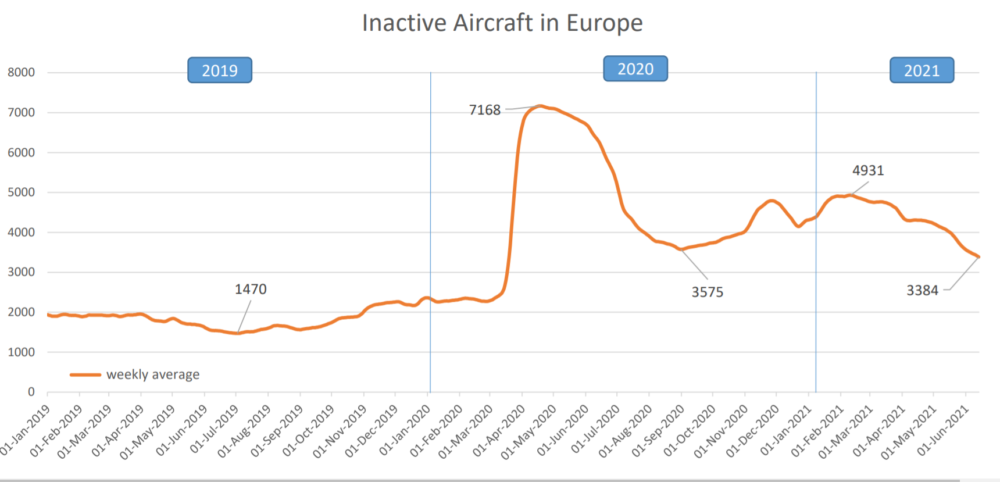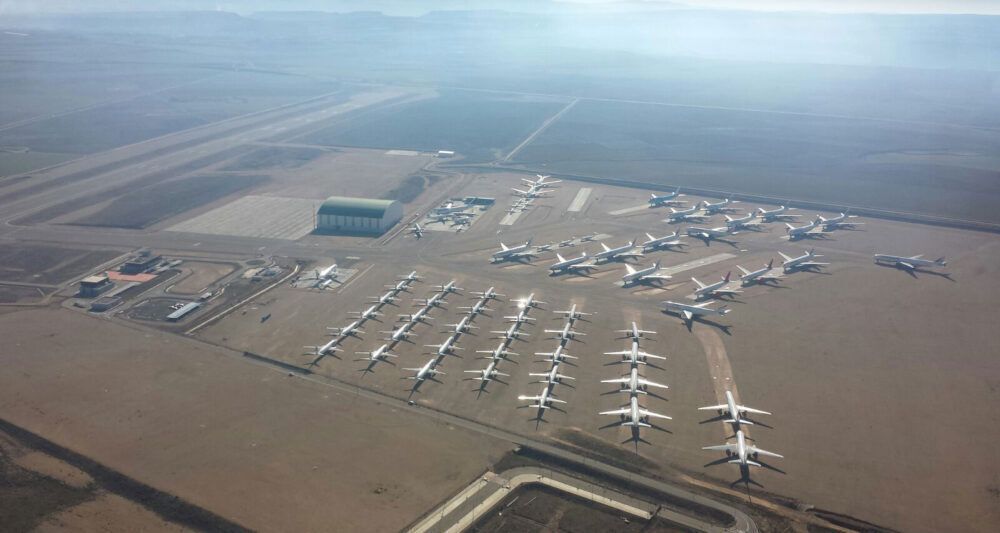Recent data suggests that there are now fewer aircraft in storage across Europe than at any other point during the pandemic. At the peak of the pandemic, over 7,000 aircraft were stored at airports and on runways and aprons across Europe. Now, this figure has dropped to around 3,400.
This past year has seen a larger number of aircraft “put to sleep” or placed into storage than at any other point in history. Even other significant events such as the impact of 9/11 did not see so many aircraft go into long-term storage. According to data collected by Eurocontrol, at its peak, a weekly average of 7,168 aircraft were stored in European airports.
Before the pandemic, the average number hovered at around 2,000 per week. This number fluctuated as low as 1,470 at some points in 2019 and changed seasonally as the northern hemisphere summer is much busier than the winter months. Generally, more aircraft are stored and undergo maintenance during the winter months.
New analysis by Eurocontrol shows that, currently, around 3,384 aircraft are parked across Europe. This is the lowest number since the pandemic began last year. Numbers did improve to similar levels in September of last year with just 3,575 aircraft parked, but the second and third wave of the virus across Europe saw numbers increase again.
Grounded aircraft
The peak number of grounded aircraft actually occurred fairly early on in the pandemic. Data shows that it was around May of 2020 when most aircraft were parked. There are several reasons for this. Firstly, as summer approached, more aircraft were needed to aid continued repatriation efforts, as well as some summer routes opening up to tourists and leisure travelers.
Secondly, it became obvious that the aviation industry had drastically altered for the foreseeable future within the first few months of the COVID-19 outbreak. This led to many airlines deciding to speed up retirement programs. Aircraft like Boeing 747s and Airbus A380s were retired en masse. Once aircraft have been retired or scrapped and are sent to overseas desert locations in the US and Australia, they are no longer counted in European data.
Positive signs for European Airlines
As most people are aware, aircraft are only making money for airlines when they are flying. Stored aircraft are surprisingly expensive. Aircraft need ongoing maintenance to ensure they aren’t damaged by adverse weather conditions, either too cold or too wet. This means aircraft are carefully cleaned and covered before storage. This takes time and money.
There are also the additional costs of maintenance and fees for the airport storing the plane. Then there are additional fees to take an aircraft out of storage. So as well as not making money, storing planes costs money.
With more and more planes coming out of storage, this is a good sign of things to come. It shows that demand is increasing and becoming more regular. It’s now worth it for airlines to bring their aircraft out of storage. According to the data, more than 800 aircraft have left storage since May 2021, showing that the summer 2021 season is looking positive.
What do you think of the latest data? Are you surprised? We’d love to know what you think, so get in touch and leave us a comment.



